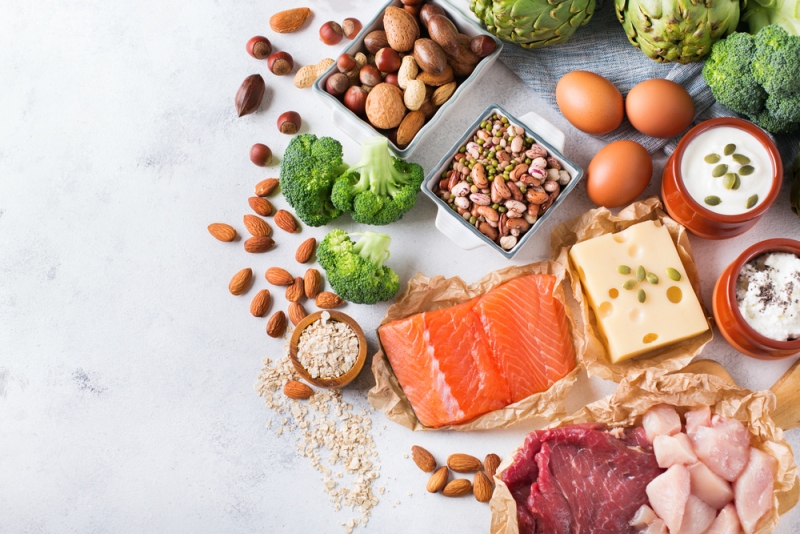Proteins ensure normal functioning of all living organisms and resemble a string of beads, made up of 20 different amino acids. The problem? 9 of the amino acids are essential yet cannot be produced in the human body in the levels needed. Therefore, you must obtain these through your diet.
Besides the 9 essential amino acids, 6 of the other 11 common amino acids are conditionally essential. Normally we produce them in high enough levels, however, during special conditions, such as illness or stress, they must be supplemented to meet the body’s demands.
Food sources, containing all essential amino acids, are termed complete proteins. These include meat, poultry, seafood, dairy products and eggs. Among plant-based foods, e.g. soy, quinoa and buckwheat you also find complete proteins. Therefore, you should include these protein sources in your diet and study the protein content in your other food sources.

How amino acids influence everyday life
In nutritional studies, you often need to determine free amino acids in different food supplements. Contradictory, scientists analyse amino acid content in tissue, serum and other body fluids.
For production of biological medicine, cell cultures are used to produce active proteins. Laboratory conditions are optimized for the highest yield and greatest product quality. The uptake and release of nutrients present in the cell culture is a direct measure of the cell’s condition. It is thus necessary to monitor the amino acid composition, for evaluation and optimization of the medicinal production.
Analysis of amino acids in supplements and food products
Overall, amino acid analysis is fundamental in quantification and characterization of proteins in medicines, protein supplement or food product. Even though the material/mixture that needs to be analysed varies a lot, the method is the same after a few adjustments. The analysis relies on a technique called chromatography. Each type of amino acid is separated from the rest by its specific chemical properties. A pool of amino acids is applied to a sticky column and the liquid runs through with each type of amino acid being released one at a time from the column. The amount is determined by colouring each amino acid. In this way, the amount of colour corresponds to the amount of amino acid in the original mixture.